The Comics and Music roundtable index is here.
______________
In his notes on Frank Miller and David Mazzucchelli’s Born Again, Brian Cronin writes:
“And it all ends with a likely Bob Dylan reference, so how much better can you get?”
Cronin is of course donning the cap of coyness here. The final page of Born Again isn’t a “likely” Dylan reference, it’s a bare faced homage to the cover of The Freewheelin’ Bob Dylan—the ultimate evocation of tenderness for a certain generation of record collectors; the knight in lusterless armor finally getting his girl.
Karen Page’s one time junkie whore has kicked her addiction and is now in the arms of her destined love or as Wikipedia helpfully tells us:
Critic Janet Maslin summed up the iconic impact of the cover as “a photograph that inspired countless young men to hunch their shoulders, look distant, and let the girl do the clinging”.
Of this description I have my doubts. Perhaps the word “reinspired” would work better here. It seems to me that women have been depicted (by men) clinging to men long before Dylan and his photographer got their hands on this quintessential moment.
“Don’t Think Twice, It’s All Right” seems overly sentimental musically but correct lyrically for much of this comic, the song apparently written by Dylan when Rotolo left him to study in Italy. The album cover captures that point in time when she had returned safe to his arms in a trench coat and two sweaters, the fire escapes and tenements like a pastoral landscape in the background.
Born Again may be seen as an apocalyptic text divining this fleeting state of heaven…
…a paradisaical condition always on the edge of disaster; a state of perfect goodness where stories are perpetuated when no more need be told—a testament to the prescience of Miller and Mazzucchelli. The comics boom of the late 80s, that period which ushered in Miller’s Daredevil, was followed inevitably by bust and then capitulation; the present day sales figures befitting nothing less than high end toilet paper. The superhero form now even rejected by that one time font of spandex adulation, the Eisners (though this last rejection is most likely an aberration born of the judges doing the nominations.)
But such an interpretation would be to mistake apocalypse (a revelation of god’s divine will) for prophecy. The two may be intermingled but should be seen as distinct.
Suze Rotolo wasn’t a junkie who needed saving, that part is clear. No, that junkie whore was the America of sex and drugs, that 60s VW van of lust and freedom gone mad.
The new Jerusalem is one where strength and patriotism has triumphed over the nuclear threat; the hard rain has ceased to fall. The world is in the process of being reconstructed just as the sign (a tribute to Mazzucchelli’s own partner, Richmond Lewis) on the right hand side of the comics page indicates. Nuke (as coarse a symbol as any) has been defeated by that bastion of American patriotism, Captain America—all this as illusory as the life and death of a secondary character in a second tier superhero title; everything as ephemeral as Matt Murdock and Bob Dylan’s happiness.
Karen Page—manipulated to the end by her gods—”died” in 1998. Suze Rotolo died of lung cancer in 2011. That evocation of joy, as transient as a fading photograph, now extinguished; that VW van of protest now disappeared, replaced by the dumpster truck of progress, capitalism, and acquiescence.

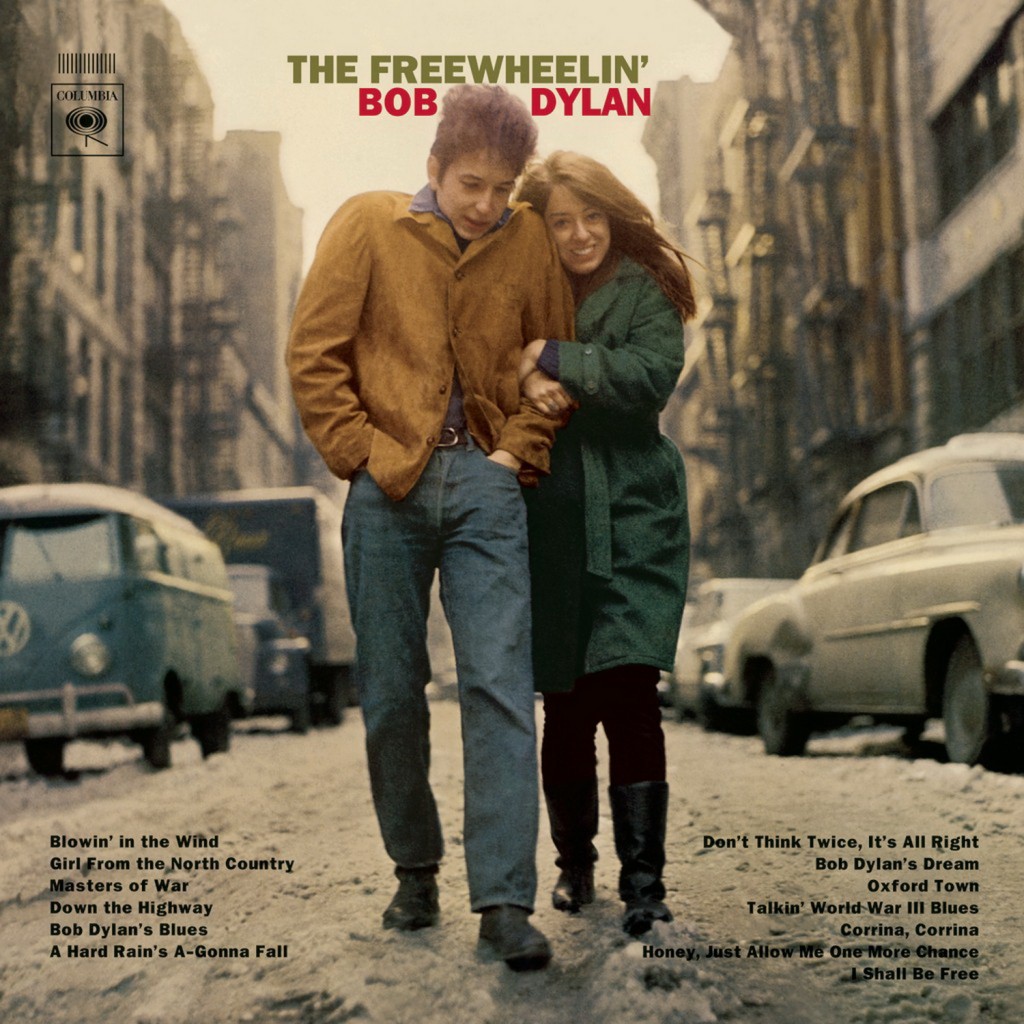
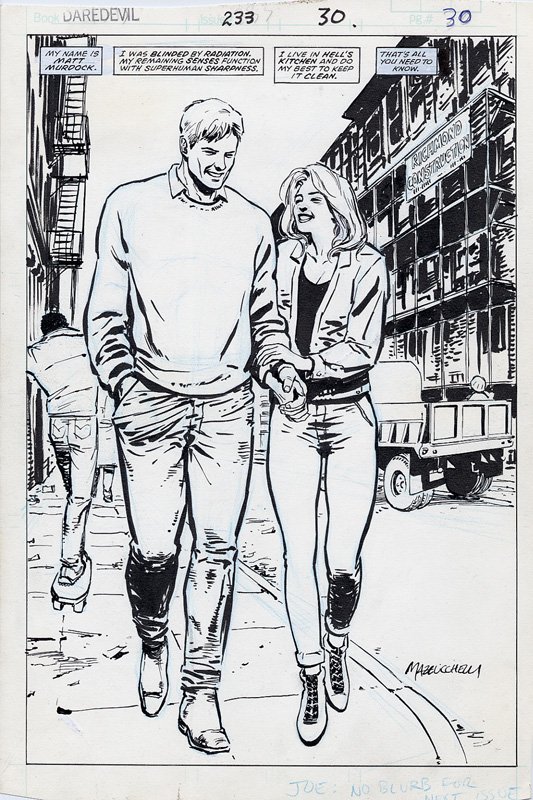
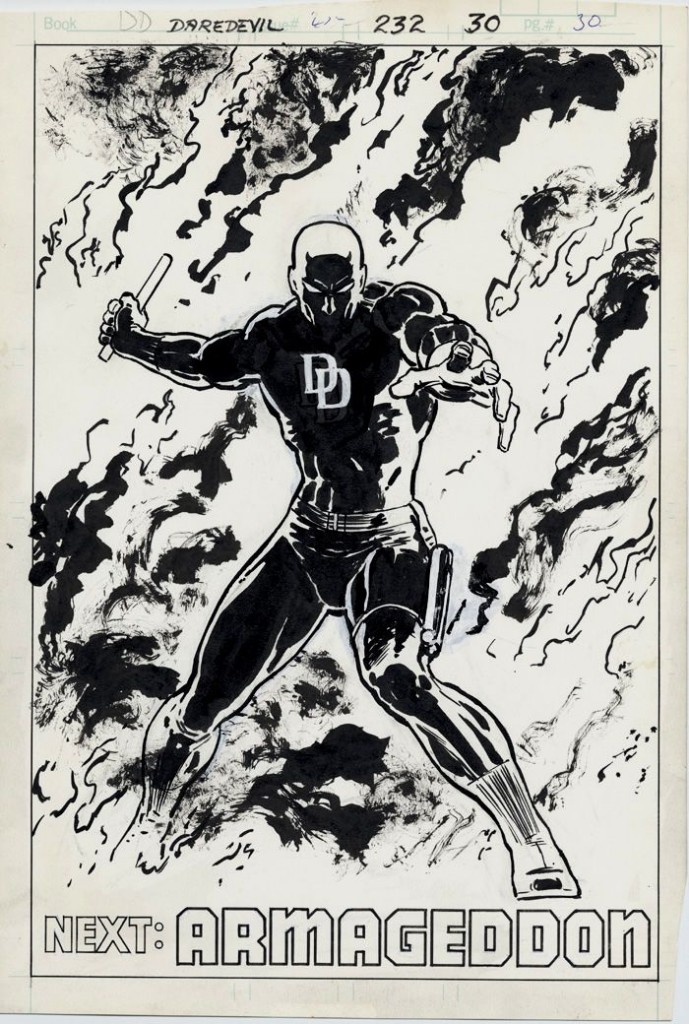
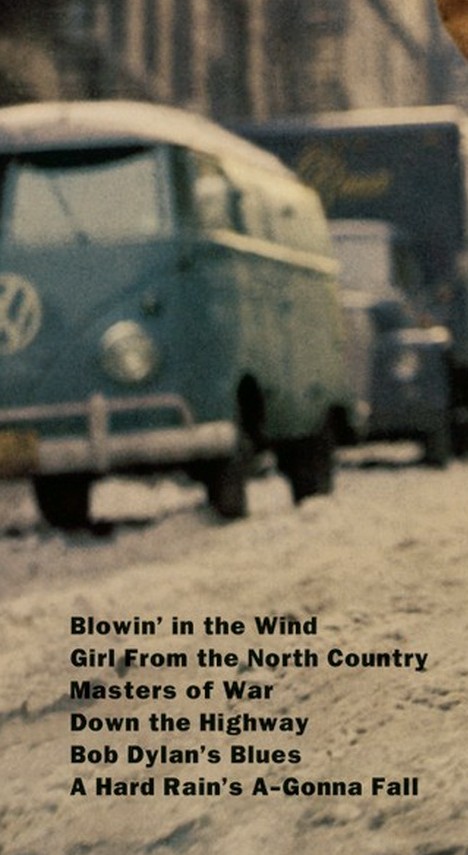
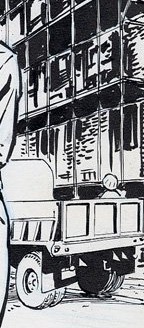
Not in a million years, Suat, would I have picked you as a reader of the blog “Comics Should Be Good”. Now you need to tell us your top 5 Defenders stories of all time.
I didn’t even know I was reading CSBG. I’ll read anything as long as Google brings me there! Actually, it was the only thing I could find online with Dylan and Born Again together. But I was also too lazy to search harder.
I got the worst sunburn of my life reading Born Again straight through — twice — while laying out on the college dorm quad. I regretted eschewing sunscreen, but not the time spent. Little did I know that listening to Dylan would have completed the experience.
Ha. I had never noticed this homage before…
I know that Miller has mentioned before in one of his TCJ interviews (not sure which one) that he was a big admirer of Dylan, although I think he basically says that it’s Dylan’s “fuck off” attitude and willingness to risk alienating his audience that appeals to him. (I think that in the same interview he says he had no use for the 60s or any of the music that came from it.)
I think the punk scene in NYC appealed to Miller, though I don’t know if it was as participant or as observer: he semi-famously had Peter Parker go to CBGBs in a Spider-Man annual (where the band Shrapnel was playing… there is a Miller-drawn ad for their 45 in the comic). And I remember a “Jim Carroll Band” graffiti in an issue of Daredevil.
My gut tells me that the “Freewheeling” homage came from Mazzuchelli rather than Miller. But who knows?
I don’t remember that interview but Miller’s disdain for the 60s and (maybe) Dylan’s protest music is in sync with his political leanings as seen in Born Again.
Seems to have been quite a close collaboration on the DD book so they could have come to a mutual agreement even if the homage was not specified in the script itself.
Another influence– Miller stated that his version of Matt Murdock was based on Robert Redford.
Well, that was a bit of a failure. At least you can see a bit of Belmondo in the early Blueberry comics.
Well, Miller made the interesting comment that he wasn’t going for a likeness, he just needed a mental reference point.
John Byrne said something similar: his mental reference for Colossus was the actor who portrayed Jethro on ‘The Beverly Hillbillies’.
Just like Elektra’s model was that pioneering lady body builder? It’s a good approach since Miller doesn’t do good likenesses – at least his preferred style doesn’t allow for it.
Yeah, Lisa Lyons.
Oh, man. Lisa Lyons was hot! Had a poster of her working out in my first apartment: http://www.girlswithmuscle.com/images/full/746529095.jpg . (Who needs Farrah Fawcett?) And a book of photos of her taken by her friend Robert Mapplethorpe…
Re that Dylan album cover/Daredevil image, picked up this DVD from the library:
http://collider.com/wp-content/image-base/Movies/A/Away_We_Go/away_we_go_movie_poster.jpg
I’d say that rather than necessarily being a Dylan hommage, Mazzucchelli simply recalled the image as an elegant pictorial solution.
You want a single, strong image, focusing on a couple setting forth on a new life together (that “Away We Go” movie’s plot is along that vein): there it is! No need to graphically “reinvent the wheel.”
(As a commercial artist, I’m particularly aware of the problem-solving strategies, shameless lifting of others’ solutions, routinely accepted in the biz, which are involved.)
———————-
Ng Suat Tong says:
It seems to me that women have been depicted (by men) clinging to men long before Dylan and his photographer got their hands on this quintessential moment.
———————–
Indeed, and how irritating it is. I placed a book to obscure the back cover of the latest “Rolling Stone,” the better to hide this noxious scene:
http://1.bp.blogspot.com/-uswxLUk42U0/UQqqLtOdkqI/AAAAAAAAYYU/t5_FgTaRzTg/s1600/Gucci-Guilty-Black-Fragrance-For-Men-and-Women-Spring-Summer-2013-Ad-Campaign-Glamour-Boys-Inc-03.jpg
Along that vein:
http://s1.ibtimes.com/sites/www.ibtimes.com/files/styles/article_slideshow_slide/public/2012/10/30/gucci-guilty-men-fragrance-ad-chris-evans-rachel-evan-wood373do043011-1304176690.jpg
And, the ultimate example: http://3.bp.blogspot.com/_7HHNnegZlXA/S-rLtaaJodI/AAAAAAAAAS8/YCwlXRWt_j8/s1600/FrankFrazetta-Conan-the-Adventurer-1966.jpg
All those images, including the Dylan and Daredevil ones, featuring a male either lost in his thoughts or looking out at us, whilst the femme is clinging to or worshipfully gazing up at him. Grrrrr!
Thus illustrating the Byron truism, “Man’s love is of man’s life a thing apart,; ‘Tis woman’s whole existence.”
And also recalling how women with unloving, distant fathers want men who are (or act) aloof, indifferent; that they may replicate the “trying to win the love of an uncaring jerk” psychodrama of childhood. (More details at http://www.amazon.com/Women-Who-Love-Too-Much/dp/1416550216 )
Could be – the perspective on the images is similar enough that you have to think he had the record cover in front of him when he did the drawing. Some changes needed because of the dimensions of the comics page and a record cover of course.
Strangely enough, all the images above seem to post-date the Dylan album. Maybe its influence is stronger than we think…